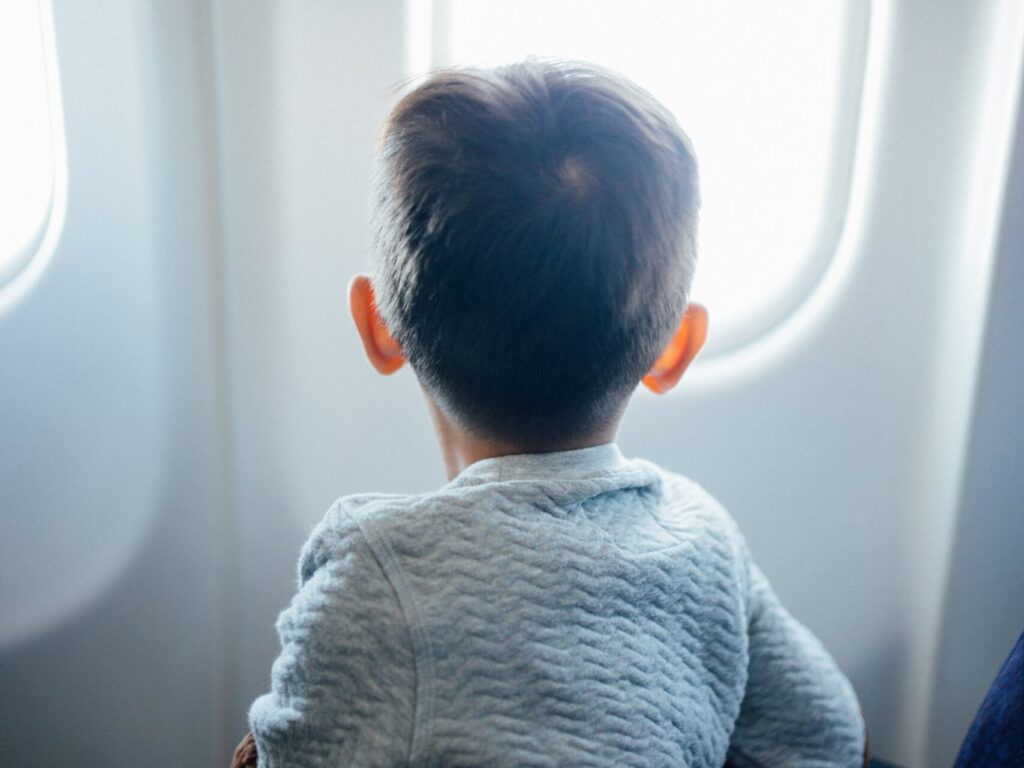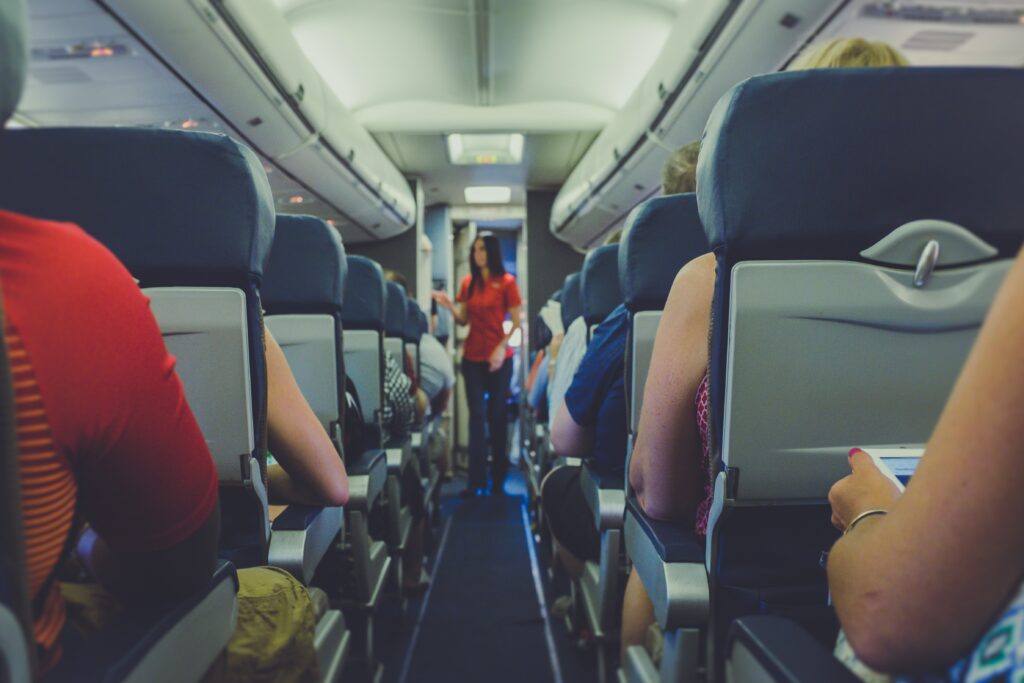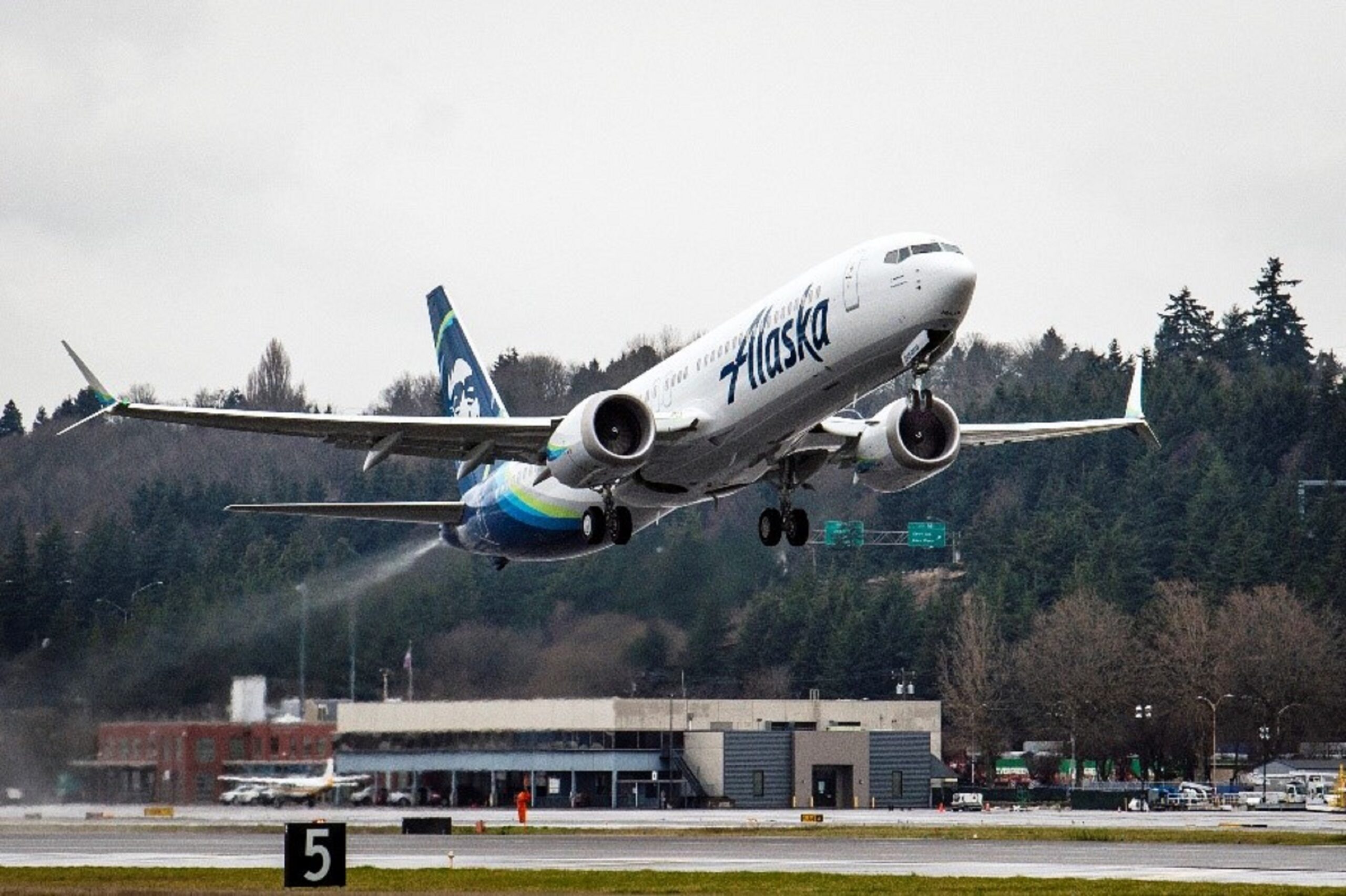Flight Attendants Want to Ban Parents from Sitting Children on Their Lap
An organization representing flight attendants has called on the FAA to update safety regulations to require all children to have their own seat on planes
by Lauren Smith
March 20, 2023

Photo: Courtesy of Christopher Ott / Unsplash
Citing recent incidents of severe turbulence and the risk of injuries, a flight attendant union is calling for young children to be required to have their seats on aircraft, overturning exemptions that allow children under two to sit on parents’ laps during flights.
The U.S. Association of Flight Attendants-CWA, representing 50,000 flight attendants at 20 carriers, raised the issue of unsecured babies last week at a Federal Aviation Administration (FAA) safety summit. The union has also included “a seat for every soul” in its suggestions to Congress, which is preparing a bill for the FAA’s authorization, which expires in September.
Under the FAA’s current civil air regulations, “a seat and an individual safety belt are required for each passenger and crew member excluding infants, who are in other than a recumbent position.”

Photo: Courtesy of Hanson Lu / Unsplash
Flight attendants say this exemption leaves infants at risk of severe injury in the event of turbulence and crash landings.
“We’ve seen airplanes go through turbulence recently and drop 4,000 feet in a split second,” Sara Nelson, international president of the AFA-CWA, told the Washington Post.
She referred to a Lufthansa flight that went into free fall during severe turbulence earlier this month and was forced to divert to Dulles International Airport in Washington D.C. (IAD). The incident injured passengers, with some taken off the plane in wheelchairs and covered in blood.
“The G-forces are not something even the most loving mother or father can guard against and hold their child. It’s just physically impossible,” Nelson said.
It isn’t the first time flight attendants have pressed for an overhaul of regulations about seating infants on planes. It’s been a demand of the union since the crash-landing of United Flight 232 in Sioux City, Iowa, in 1989. Complying with protocols, the plane’s flight attendants told parents to wrap unsecured infants in blankets and place them on the floor. Three infants suffered injuries during the crash landing; one died among the 112 onboard.
The debate about child restraints was reignited in 1994 when a child sitting on her mother’s lap died during a USAir crash in Charlotte, North Carolina.

Photo: Courtesy of Kenny Eliason / Unsplash
“Sadly, this has been more than a 30-year priority for our union,” Nelson said. “We must have children safe on the plane and in their own seats with a proper restraint device to make sure it never happens again.”
Pediatricians echo this suggestion. “The safest possible thing is for everybody to be restrained,” said Ben Hoffman, president-elect of the American Academy of Paediatrics. The AAP has called for a federal requirement for restraint use on children on all aircraft since 2001, citing preventable deaths of children following survivable crashes and turbulence.
Hoffmann recommended that parents purchase seats for their children and secure them in FAA-approved car seats during flights.
The FAA makes this suggestion: “The safest place for your child under the age of two on a U.S. airplane is an approved child restraint system (CRS) or device, not in your lap. Your arms aren’t capable of holding your in-lap child securely, especially during unexpected turbulence, which is the number one cause of pediatric injuries on an airplane.”
But federal regulators have resisted making this requirement mandatory, mainly over concerns that the need to purchase an extra seat may dissuade parents from flying and push them to drive, a more dangerous form of transport.
A 2003 study published in The Journal of the American Medical Association (JAMA) Pediatrics found that requiring child-restraint seats on aircraft could prevent 0.4 air crash deaths per year. However, those averted deaths would be eclipsed by child deaths in car accidents if just 5 to 10% of parents opted to drive rather than purchase an additional seat for their infant.
“Unless space for young children in restraint seats can be provided at low cost to families, with little or no diversion to automobile travel, a policy requiring restraint seat use could cause a net increase in deaths,” the researchers concluded.
To offset this risk, airlines should provide discounted seats for children, Hoffman said, noting that under the current system requiring a seat and child restraints would be “cost prohibitive” for many families.



